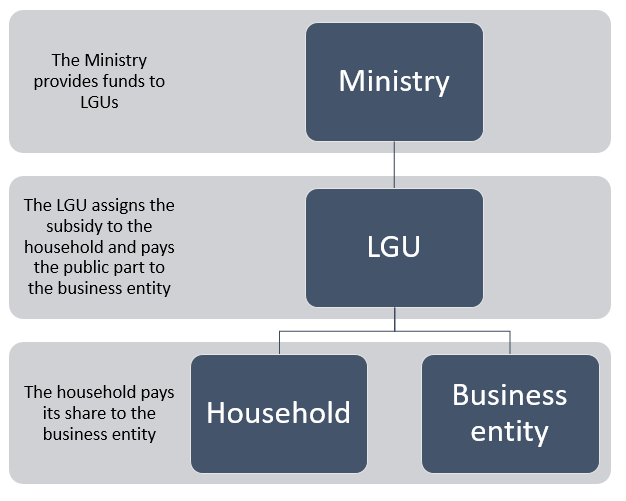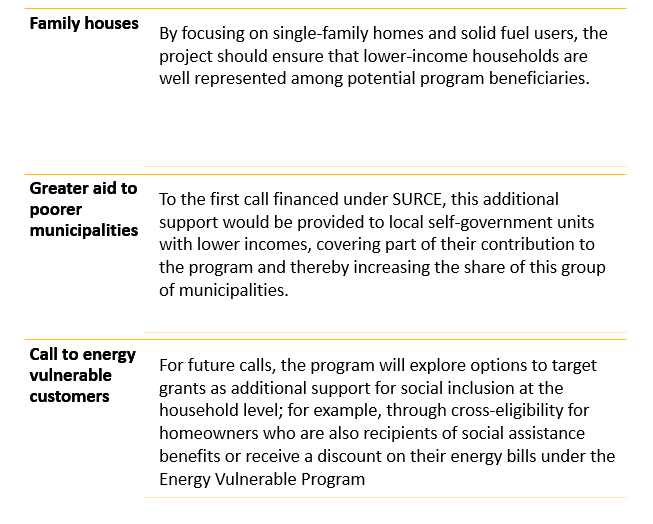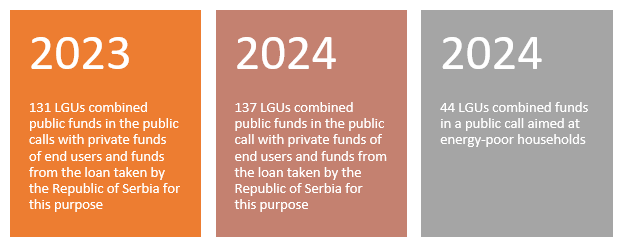We will return those loans that we had to and could have used to reduce the chance that our citizens will lose their lives. Knowing this, the thought that we will pay back the loans we use to give money to those who are among the richest to improve their energy efficiency is not difficult for us. However, we can change the way we spend the money from the International Bank for Reconstruction and Development loan, at least partially, whenever the people who sit on the project’s Steering Committee want to. If you want to know more, read the text we have prepared for you.
The project “Clean energy and energy efficiency for citizens” is a five-year project of the Ministry of Mining and Energy and the World Bank, which provides subsidies to households for the implementation of energy efficiency measures. These subsidies, financed by a loan from the World Bank in the amount of 50 million dollars, were made possible in order to improve energy efficiency and sustainable heating in households and are implemented in the manner shown in Figure 1[1]

What is planned?
In the supporting documents of the project it is indicated that the project will focus on lower income households in several ways which are shown in Table 1:

What did we research?
We at RES Foundation wanted to determine whether taxpayers’ money intended for the improvement of the public good also reaches those who do not have enough funds to ensure better energy efficiency themselves.
In order to determine whether the project managed to provide a focus on households with lower incomes, we observed the implementation of this project in the last two years through the analysis of three public calls (Figure 2):

- The design of the call, which was not aimed at energy-poor households, is such that it directs the most public funds provided by this loan to those who can spend the most money. Public tenders are such that the relative participation of citizens decreases the higher the requested amount and number of measures.[2]
- Replacement of external windows and doors
- Insulation of the facade
- Roof insulation
- Installation of a heat pump
- Replacement or installation of a new installation
- Installation of solar collectors for the preparation of DHW
- Installation of solar panels for electricity
- Creation of technical documentation
Although this is the most striking example, in all local self-governments the most public money went to a smaller number of users who could allocate the most of their own funds. These beneficiaries live in single-family homes, but the design does not appear to have enabled lower-income households to be well represented among potential program beneficiaries as planned by the project.
- In the competition in 2023, 56% of all funds in the competition were allocated to the 33 local self-government units (LGUs) that received the most funds. 56% of the population in 56% of households live in these 33 units. However, out of 33 LGUs, 27 of them are above the median in terms of % number of employees and even 29 are above the median in terms of average salary. This shows that the share of the group of local self-governments with lower incomes has not increased as planned by the project.
- In 2024, LGUs could for the first time choose to apply for funds that will be directed towards energy-poor citizens. for how many funds. LGUs decided to request 10 times more funds for citizens who are NOT energy poor. 44 LGUs decided to request funds for the energy poor and 137 LGUs for other citizens. LGUs could apply simultaneously for one and the other funds. Of the 44 LGUs that opted for funds for the energy poor, only two LGUs: Niš and Gnjilane, received 50% of the total funds, 58.5 million out of 118 million?! LGUs were more up-to-date in announcing competitions for energetically non-endangered citizens, so by the end of October 2024, 96 out of 137 LGUs had announced invitations for energetically “non-endangered” citizens, and only 16 out of 44 LGUs had announced invitations for energy-endangered citizens. By the end of October, according to publicly available data, only Beočin and Vršac had completed tenders, and a total of 8 energy vulnerable customers received funds.
For to the one who has, more will be given, and he will have an abundance, but from the one who has not, even what he has will be taken away.[3]
[1] https://www.mre.gov.rs/tekst/2149/projekat-cista-energija-i-energetska-efikasnost-za-gradjane-surce.php
[2] https://www.mre.gov.rs/extfile/sr/4536/POGM_mart24-%20prevod%20srpski.pdf
[3] Matthew, 13.12
